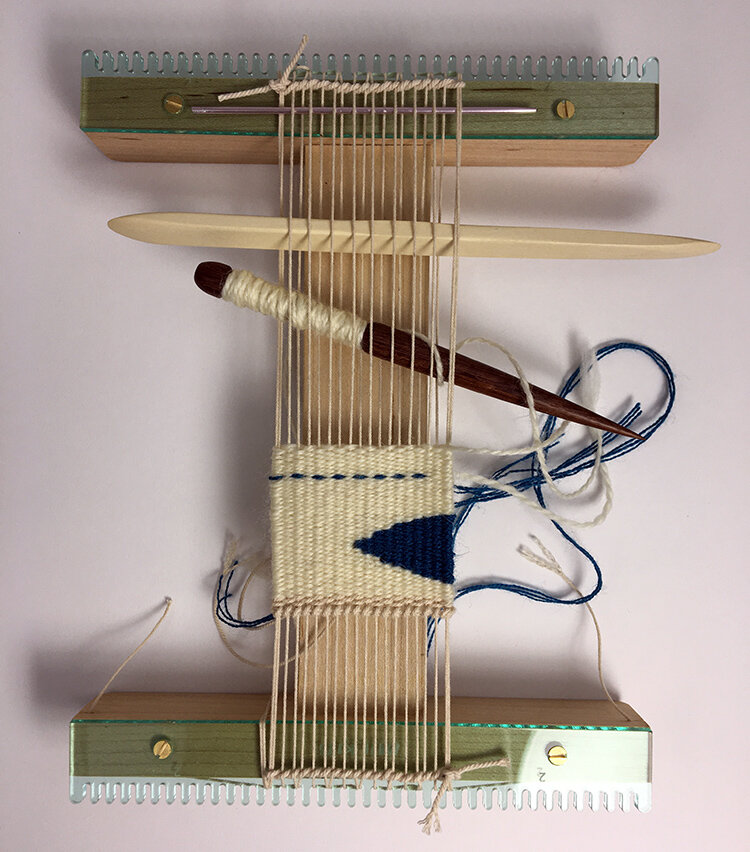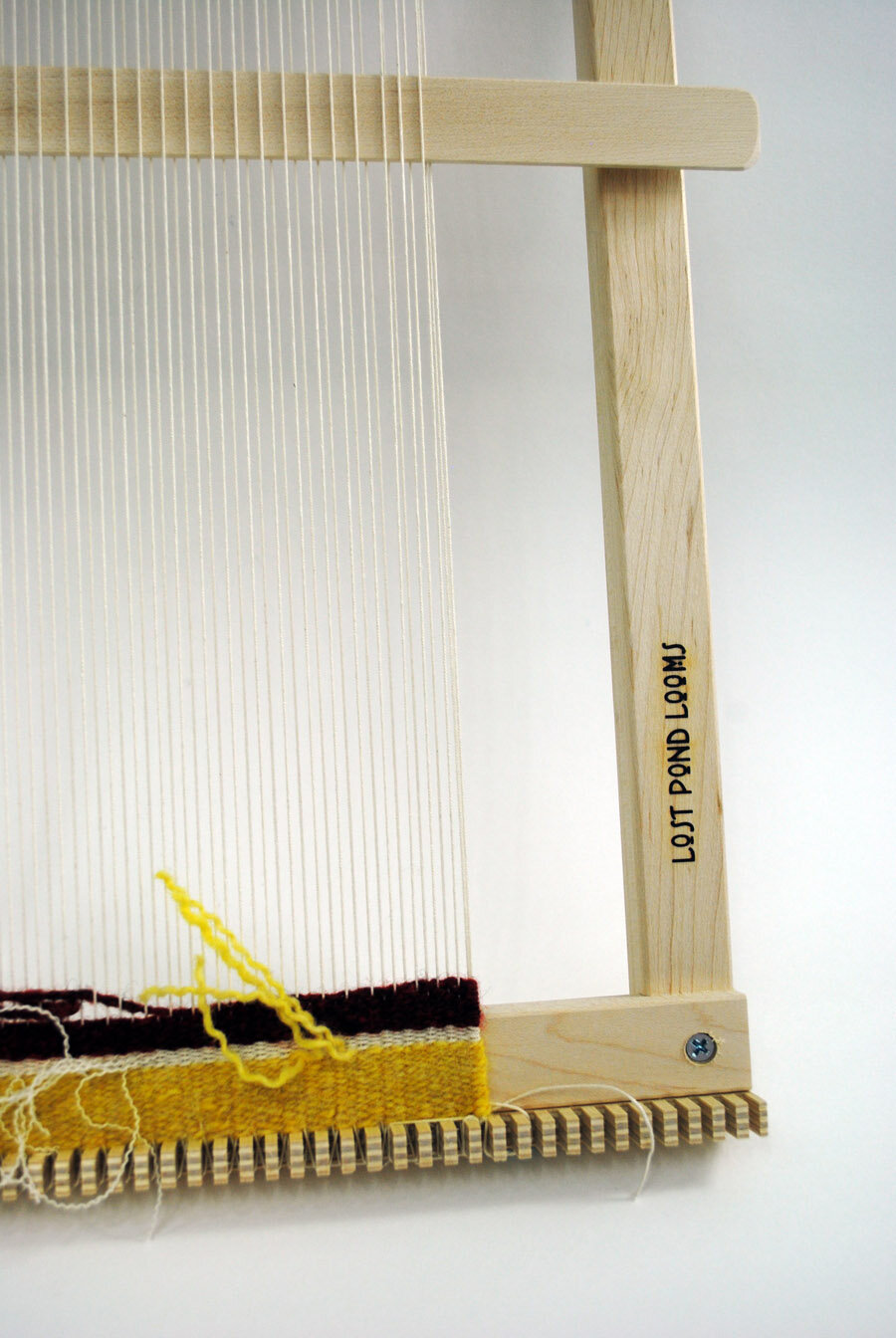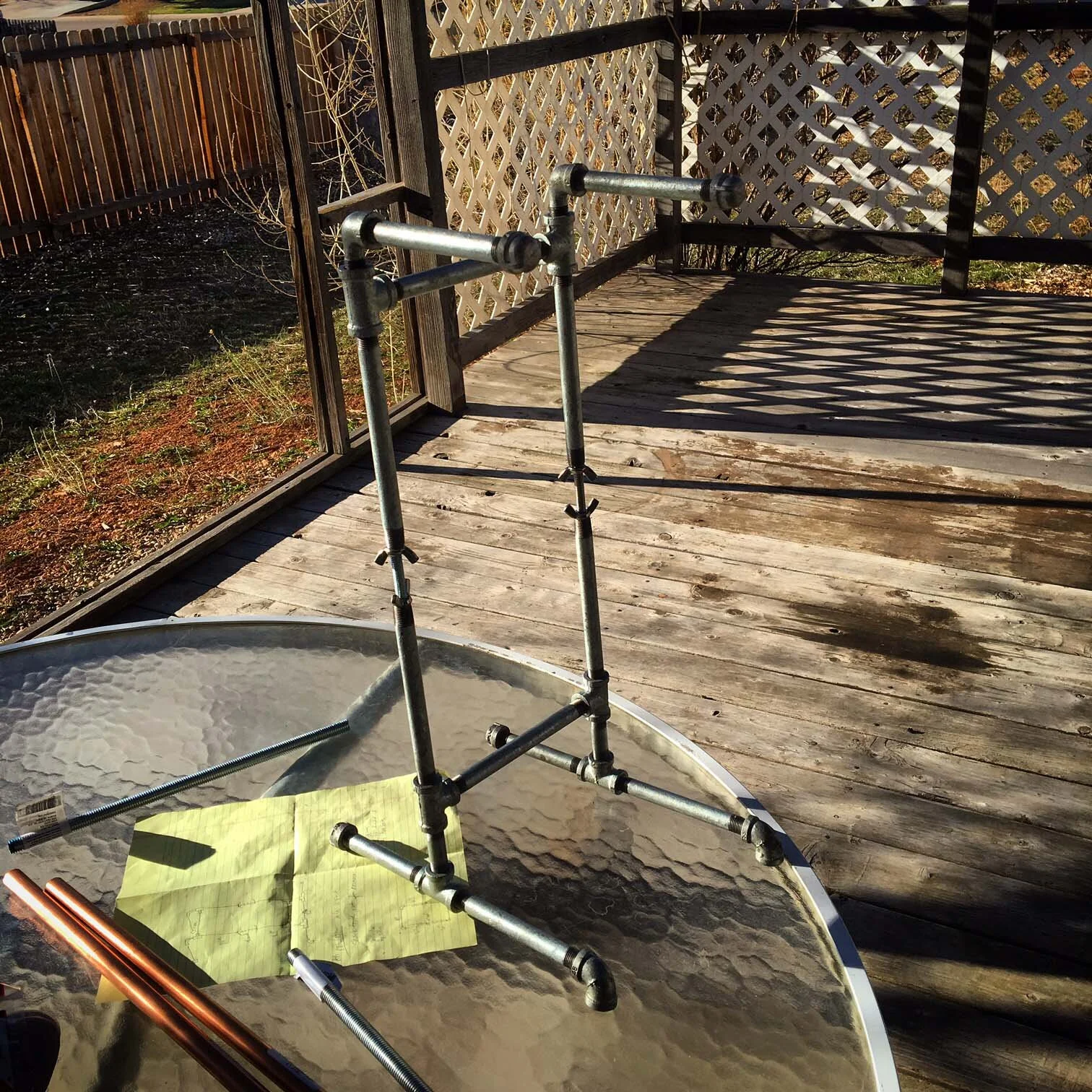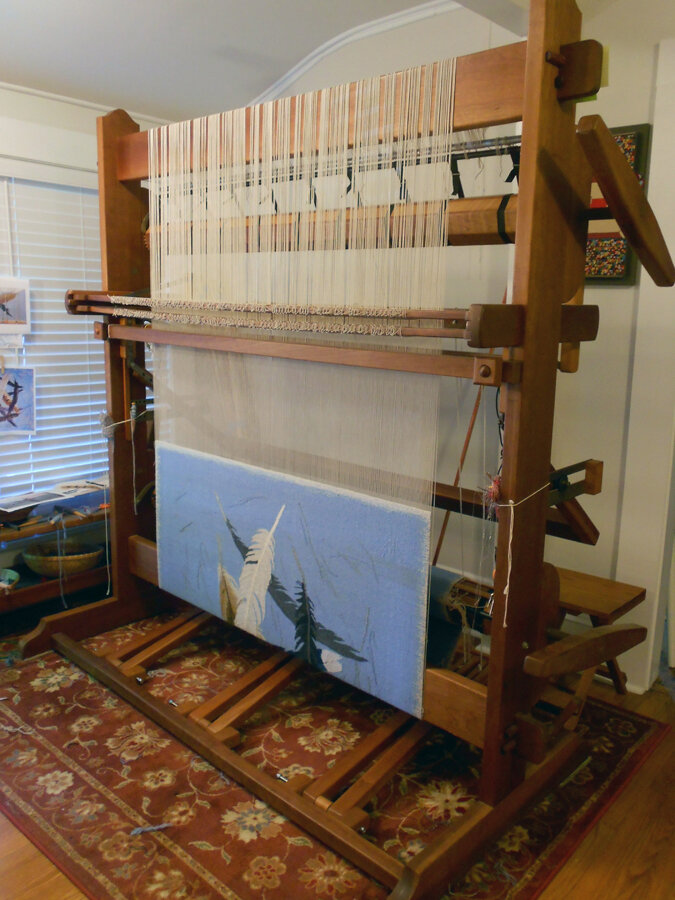I’ve written a lot about tapestry looms over the years. I’ve linked to some of those posts below. I get a lot of questions from new weavers about looms and which one might be the best for them. I’d like to summarize some of the things to look for in a tapestry loom. After that, the blog posts below will lead you to more information about the loom you’re interested in.
I have started categorizing tapestry looms this way.
Untensioned frame looms: these are generally small looms that do not have a tensioning device. Examples are the Schacht Easel Weaver and the Handywoman Loom.
Tensioned frame looms: These are looms that could be larger than the untensioned frame looms that have a tensioning device. Examples are the Mirrix and the Glimakra Freja loom.
Beamed looms: These are looms that have two beams to hold the warp and the woven cloth. Examples are the Harrisville Rug Loom and the Tissart tapestry loom.
A collection of smaller tapestry looms.
Characteristics of a good tapestry loom
The ability to achieve and adjust tension. On very small looms, good tension can be achieved by using a good tapestry warp that has a bit of stretch and sometimes by simple methods to take up slack in a loose warp. Larger looms should have tensioning devices.
The presence of a shedding device. Shedding devices are not absolutely necessary and I do weave a lot on small looms that do not have them. However, for larger tapestries especially if you’re looking for a little speed, some kind of shedding device is helpful.
A way to space the warp. For weaving tapestry, the warp must be evenly spaced. The loom can help you do this with a mechanism such as a reed, a coil, or pegs or you can space it manually and use the tension on the warp and the weaving itself to maintain the warp spacing.
A sturdy construction. You do not want your loom to fall apart whilst you’re weaving. Tapestry is easiest to weave at a fairly high tension and your equipment has to be able to withstand that.
Ergonomic comfort. Taking care of your body is important. Looms come in all different sizes and configurations and the one that works best for you might not work the best for your neighbor.
Frame looms: tensioned or untensioned?
Frame looms are looms that have a generally rectangular shape. They can have tensioning devices or not. The galleries below have some examples of these kinds of looms.
Untensioned frame loom examples
Click on the images to enlarge, hover for captions and more information.
Tensioned frame loom examples
Click on the images to enlarge, hover for captions and more information.*
Looms with beams
Beamed looms have rotating beams with brakes, one holds the warp and one holds the finished cloth. Many tapestry looms fall into this category, many of them are large. Most of these looms have shedding devices. People who weave functional fabrics are used to jack looms. They are smaller than other beamed looms and fit in our houses nicely. But almost all jack looms are poor choices for tapestry. Their light construction and the way that the shed is created means that you can’t get both a high tension and a good shed. Exceptions to this are the larger Macomber jack looms (40 inches or wider) and Louet table looms.
High-warp versus low-warp looms
You may see the terms high-warp and low-warp thrown around in regard to tapestry looms. High-warp looms are looms where the warp is vertical. Low-warp looms have a horizontal warp.
Ten worthy blog posts about looms
Tapestry looms: Matching loom choice to what you want to weave This is a post I did a few months ago for the American Tapestry Alliance’s Instagram media tour. It contains a short video and some text about various small looms and why you might choose one over another.
Small tapestry looms: Which one should I use? This post is about four small peg or slot looms. They are all untensioned frame looms, are fairly inexpensive, and are best for fairly small tapestries. I talk about the Handywoman loom, the Schacht Easel Weaver, a small wooden arch loom, and Made Kits by One-One Thousand.
The Saffron Pocket Loom has landed This loom is new from Mirrix in late spring of 2020. It is a small loom with tensioning.
The Schacht Arras Tapestry Loom My newest tapestry loom, this review was written in September of 2020 and added here because this is definitely a loom you should consider when deciding which loom to purchase.
A tapestry weaving demo This post has a video of me weaving on a Handywoman loom. If you want to see how I weave on these small untensioned looms, this is a great video to watch. There is a version with commentary in the Weaving Tapestry on Little Looms online course in the bonus section.
Which tapestry loom is right for me? Part 1: Low warp looms This post discusses low-warp looms and now their mechanisms work. These looms are mostly large beamed looms that sit on the floor.
Which tapestry loom is right for me? Part 2: High-warp looms This post talks about a lot of different high-warp tapestry looms as well as some smaller portable looms.
Sett: Looms and tools I did a whole series of blog posts about the importance of sett (all linked from this one). This post in the series talks about how your equipment influences the sett at which you weave—a good consideration when you’re loom shopping!
My Hokett Kit I travel quite a bit to teach and to hike and I usually bring along a small kit with loom and tools. If you’re curious what I bring, take a look at this post.
Making your own loom out of copper pipe This post shows you how to make an inexpensive tensioned frame loom. There are instructions for making other looms out of galvanized or black pipe, copper pipe, and PVC in the Fringeless online course.
*There are two new tapestry looms being released in the coming months. You’ll want to look at both of them!
Mirrix Saffron Pocket Loom. Mirrix has released a small tensioned I-shaped loom. It has pegs set at 8 epi (they may release more setts later), a center support that includes tensioning, and it comes apart for easy transport.
Schacht Arras Tapestry Loom. This is a loom with a 20 inch weaving width made of wood. It has a shedding device and coils to space the warp. It is a continuously warped tensioned frame loom. (Update 9-20: The loom post is HERE.)
























